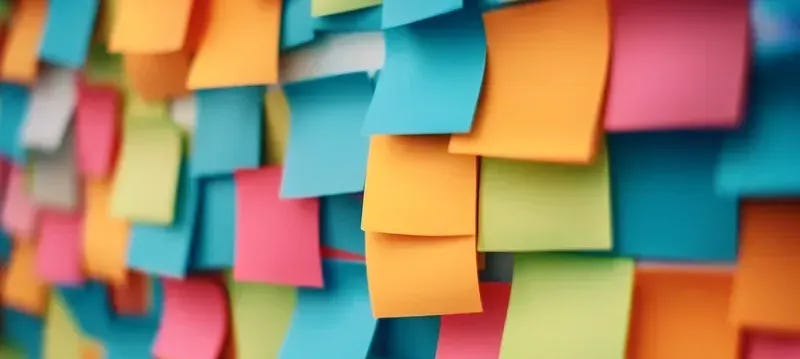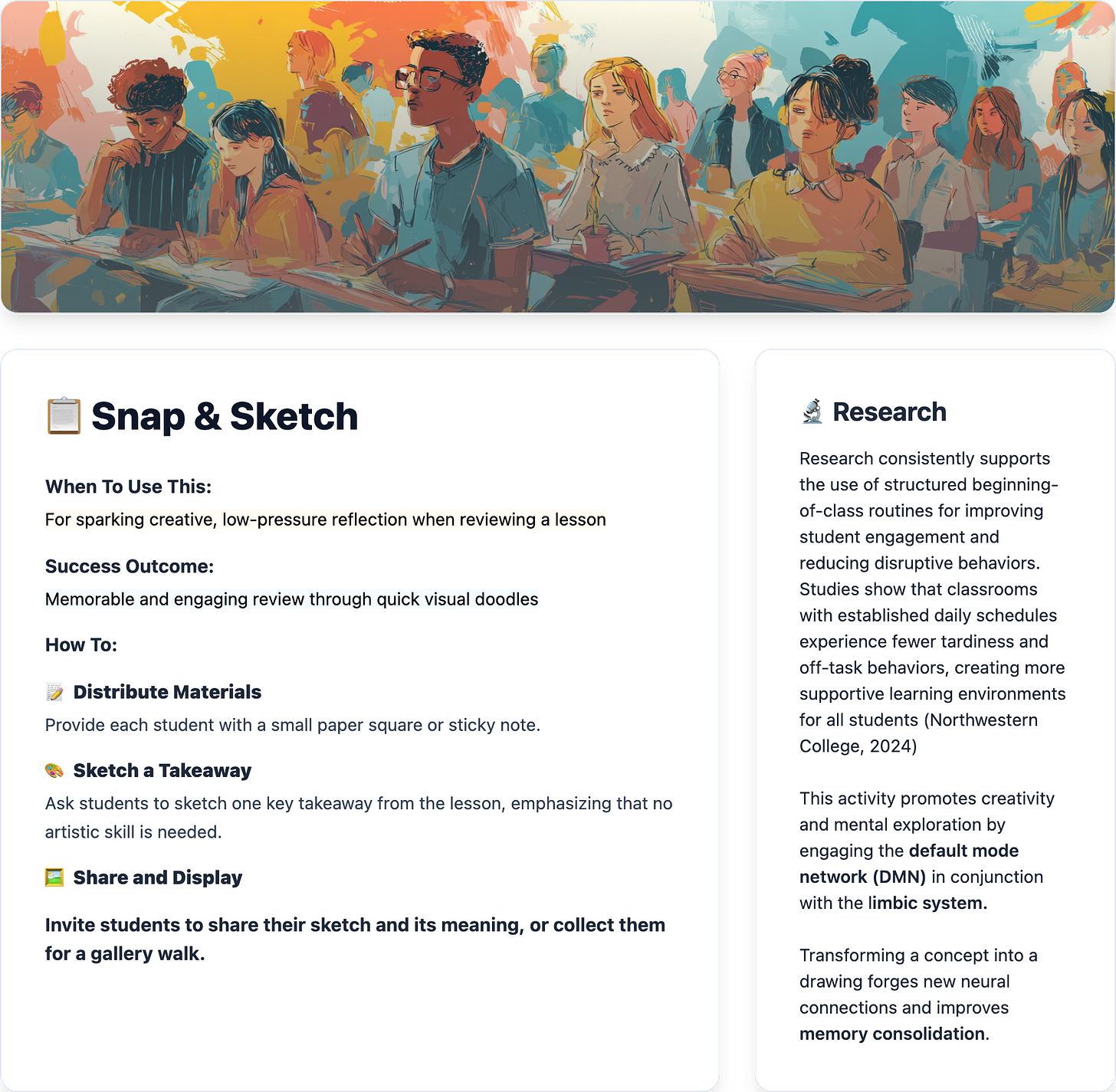The First Two Minutes Matter
How you start influences classroom management all day
If you are having difficulties before class even starts, you are not alone. Many of us are assigned hall duty, in the morning and between classes, leaving our students unsupervised in the classroom, a classic classroom management challenge. By the time you walk in, it's complete bedlam. Arguments have already started, side chatter is loud, horseplay is happening, and you have two students yelling from opposite sides of the room. You take a deep breath and wrangle them into their seats. However, as soon as you get things settled and turn your attention to attendance, the noise level once again creeps up.
Let's face it. Our days do not always start the way we planned, but when they start rocky and disruptive learning shuts down, emotions turn negative, and everyone feels stressed. The good news is that there are simple classroom management strategies you can use in the first five minutes of class to calm the chaos and focus attention.
Understanding What Drives Student Behavior
Between the unpredictability, excitability, and the determination to get to class on time, the student’s brain has activated what the BrainZones Model (BZM) refers to as the Orange Zone.
The BZM is a practical neuroscience framework that translates complex brain research into actionable classroom strategies. In this model, the Orange Zone is your brain’s “Go!” button 🟠; prioritizing immediate action over reflection through three interconnected physiological categories:
The Limbic System: This is the brain's emotional and energy command center. It gets you all fired up and ready to move. It's an older part of your brain, and it's built for speed and protection!
The Amygdala: Your brain's smoke detector. It's constantly scanning for anything exciting, scary, or important and sounds the alarm: "EVERYONE PAY ATTENTION TO THIS!"
The Hippocampus: Your brain's filing cabinet. When the amygdala fires, it tells the hippocampus, "Save this memory!" That's why students remember drama but forget yesterday’s instructions.
Neural Pathways in the Orange Zone: In the Orange Zone, neural pathways act like 8-lane freeways with no speed limits. That’s why thoughts race from brain to mouth to action before students (or adults) have time to think.
Brain Chemicals in the Orange Zone: Dopamine (the brain’s reward and motivation signal) and adrenaline (the body’s quick-action energy boost) flood the system like turbo boosts for both brain and body. These chemicals are what make the Orange Zone a powerful tool for engagement, but it’s also risky because problems can erupt without warning.
The Orange Zone isn't bad. In fact, it is one of the best zones for making memories stick, if you channel the energy with purpose. However, without direction 25 students in the Orange Zone could mean chaos instead of engagement.
How To Fix the Problem
Start with a predictable bell ringer or independent task. Put something on their desk every day such as journaling, sketching, or summarizing yesterday’s lesson. The goal is inward focus. When students are engaged in their own thinking, they are far less likely to disrupt others. This effective routine calms both the brain and the first minutes of class. For more ideas, see the article Motivation Strategies That Work.
The strategic shift from the Orange Zone, an external state, to the Yellow Zone, where the internal mind is active, leaves students conversing with themselves, rather than with each other.
Featured Yellow Strategy for Shifting: Snap & Sketch
Give each student a small paper or sticky note. Ask them to sketch one key takeaway from yesterday’s lesson. No artistic skill is needed. A quick visual with a short explanation works if they have time. While you finish hall duty or get set up, their brains stay busy activating prior knowledge instead of generating chaos. (Full strategy below.)

The Internal Mind
How reflection activates the brain’s default mode network (DMN).
When students engage in reflective tasks such as journaling or sketching, they activate what neuroscientists call the default mode network (DMN). This network is responsible for internal processing and self-reflection, and research shows the DMN and external attention networks typically work in opposition, when one is highly active, the other quiets down (Buckner & Carroll, 2007).
By intentionally activating the DMN through inward-focused tasks, you are using brain science to your advantage, shutting down the external mind and eliminating the constant need for redirection.
✨ 🔗 Additional Strategies that activate the Default Mode Network: Personal Development Prompts and Comprehension Connection (links direct to BZ library - free access, no ads).
Strategy Card for Improved Classroom Management
Snap & Sketch
This strategy can be used at the start of any class and works for all grades. It requires all students to have sticky notes, or some type of note-taking tool. The strategy card below provides implementation guidelines and research supporting the strategy.
Why a Yellow Strategy Works: Shifting from Rush to Ready 🧠
When students rush in, they’re in a high arousal state. Their brains are literally bouncing off the excitement of the hallway or the chaos of the room, flooding their bodies with stress chemicals. This forces them to focus on reaction, not learning.
A simple Yellow strategy acts like a mental off-ramp to transition students to Optimal Focus for three powerful reasons:
1. The Body Reset 🧘
Any Yellow strategy forces students to stop moving, sit, and focus quietly on a contained task. This physical stillness immediately breaks the chain of excitement and tells the nervous system the rush is over. It allows the body to flush out those reactive chemicals, which quickly calms the body and mind.
2. The Thought Switch 💡
Yellow activities require organized, focused attention (e.g., reflecting on yesterday’s lesson, copying notes for today’s lesson, or retrieval practice). This brief concentration activates control in the logical part of the brain. This essential shift stops the bouncing and redirects mental energy away from external distractions and toward the structured task at hand.
3. The Mental Anchor ⚓
The focused, low-stakes task acts as a mental anchor, absorbing all the scattered energy (excitement, worry, distraction). It provides a safe, constructive place for that energy to go, clearing the mental “clutter” and creating the space they need to take in the upcoming lesson.
💡 The Bottom Line:
Those chaotic first five minutes don’t just feel overwhelming, they steal about 15-20% of your instructional time every single day, and start class on a sour note.
A simple 2-minute bell ringer routine activates the brain’s internal processing network, transforming chaos into focus before your lesson even begins.
Later this week I’ll share a simple 2-minute mindfulness reset you can use to calm the body and anchor attention.
👋 Thanks for reading!
Debbie@brainzones.org
👉 Explore more:
What's your biggest challenge with those first few minutes of class?
Feel free to reach out, I’d enjoy connecting💌




